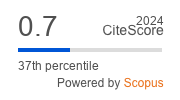Utilizing the R.E.N.A.L Nephrometry Score to predict the Surgical Technique and Peri-operative Outcomes of Renal Masses
DOI:
https://doi.org/10.47723/kcmj.v19i2.967Keywords:
nephrometry score, partial nephrectomy, radical nephrectomyAbstract
Background: despite the rise in the incidence of renal cell carcinoma attributed to availability of medical imaging, a considerable decline in mortality is an association. Morbidity-wise, the shift from radical nephrectomy to partial nephrectomy is the trend for now. Multiple scoring systems have been introduced over the past decades to help surgeons choose between radical and partial nephrectomy. One commonly used system is the RENAL nephrometry score that was first introduced by Kutikov and Uzzo in 2009.
Objective: to evaluate the role of RENAL nephrometry scoring system in predicting the surgical technique to use to resect renal masses and associated perioperative outcomes.
Subjects and methods: between December 2018 and December 2020, we prospectively recruited 88 patients with renal masses. Nephrometry scores of all patients were calculated by an experienced radiologist and a decision then was made by blinded treating surgeons to proceed to radical or partial nephrectomy. Patients then sub-grouped into low, moderate, and high nephrometry scores, and into radical and partial nephrectomy. Pre-, intra-, and post-operative data were collected and analyzed.
Results: Eighty-three patients completed the study. Thirty-three had undergone radical nephrectomy and 50 had partial nephrectomy. Total nephrometry score differed significantly between the two groups. Mass radius and nearness to the renal hilum were the only influential components. The only complication that differed significantly among the three nephrometry groups was the estimated blood loss, being highest in the low complexity group. No significant difference was found in the total operation time, ischemia time, renal function and hospital stay. Major complications were seen only in the high complexity group.
Conclusion: Total nephrometry score, mass radius and nearness to renal hilum can be regarded as good and reproducible predictors of type of surgery required to treat renal masses. They also can predict the perioperative complication to a good extent.
Downloads
Published
Issue
Section
License
Copyright (c) 2023 AL-Kindy College Medical Journal

This work is licensed under a Creative Commons Attribution 4.0 International License.














